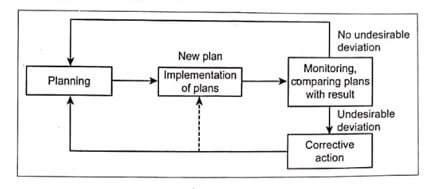Need for power system analysis in planning and operation of power system, operational planning covers the whole period ranging from the incremental stage of system development. The system operation engineers at various points like area, space, regional and national load despatch deals with the despatch of power.
Power balance equation is
Total demand = Sum of the real power generation
i.e., The generation should be such a way that to meet out the required demand.
When this relation is satisfied, it gives good economy and security.
The operation of a power system must be reliable and uninterrupted. The reliability of power supply implies more than availability of power. The loads must be fed at constant voltage and frequency.
Electrical areas are large in size. So planning for future expansion of a power system is essential. More network data must be collected for planning a power system network. For planning of power system, power engineers use computer programming.
Importance of power system planning and operational analysis covers the maintenance of generation, transmission and distribution facilities.
The need for planning and operational analysis is explained in the Fig. 1 shown.

Fig 1 Block diagram for planning and operation of power system
Steps to be followed :
> Planning of power system.
> Implementation of the plans.
> Monitoring the system.
>Compare with the results.
> If no undesirable deviation occurs, then directly go to planning of system.
> If undesirable deviation occurs, then take corrective action (i.e., increase or decrease) and then go to planning of the system.
For planning and operation of power system, the following analysis are more important.
They are – Load flow analysis,
Short circuit analysis, and
Transient analysis.
To identify the potential deficiencies of the proposed system, the cause of the equipment failure and malfunction can be determined through a system study.
1.Load Flow Analysis
Normally, electrical power systems operate in their steady-state mode and the basic calculation required to determine the characteristics of this state is called as load flow.
Power flow studies are used to determine the voltage, current, active and reactive power flows in a given power system. A number of operating conditions can be analyzed including contingencies such as loss of generator, loss of a transmission line, loss of a transformer or a load. These conditions may cause equipment overloads or unacceptable voltage levels. The study results can be used to determine the optimum size and location of the capacitors for power factor improvement. The results of the power flow analysis are the starting point for the stability analysis.
Load flow study is done during the planning of a new system or the extension of an existing one. This is also needed to evaluate the effect of different loading conditions of an existing system.
2. Short Circuit Studies
Short circuit in any part of a power system causes as manifold increase in current and creates an abnormal or faulty condition in the system.
The short circuit studies are performed to determine the magnitude of the current flowing throughout the power system at various time intervals after a fault. The magnitude of the current flowing through the power system after a fault varies with time until it reaches a steady state conditions.
The objective of short circuit analysis is to precisely determine the currents and voltages at different locations of the system corresponding to different types of faults, such as three phase to ground fault, line to ground fault, line to line fault, double line to ground fault and open conductor fault. The data is used to select fuses, protective relays and circuit breakers to rescue the system from the abnormal condition. The symmetrical components and sequence networks are used in the analysis of unsymmetrical faults.
3. Transient Stability Analysis
The ability of the power system consisting of two or more generators to continue to operate after a change occurs on the system is a measure of the stability.
In power system, the stability depends on the power flow pattern, generator characteristics, system loading level and the line parameters, etc.
There are two forms of instability in power system such as the loss of synchronism between synchronous machines and the stalling of asynchronous loads. Stability may be divided into steady state and transient stability.
The steady state stability is defined as the ability of the power system to remain in synchronism following relatively slow load change or continual changes in generation and the switching out of lines.
Transient stability is defined as the ability of the power system to remain in synchronism under large disturbance conditions, such as fault and switching operations. The maximum power transfer limit is less than that of the steady state condition.
Transient stability studies are conducted when new generating and transmitting facilities are planned. The studies are helpful in determining the nature of the relaying system needed, critical clearing time of circuit breakers, voltage level and transfer capability between systems, etc.
| Read More Topics |
| Introduction to electromagnetic induction |
| Magnetic field due to an electric current |
| Alternative and renewable energy sources |





